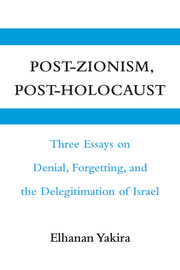4 - Postscript: 1967 or 1948?
Published online by Cambridge University Press: 05 June 2012
Summary
By a strange coincidence, the beginning of the new millennium can be seen as a turning point in the history of the State of Israel. The year 2000 witnessed the most far-reaching attempt to put an end to the Palestinian-Israeli conflict, the failure of a long and complex peace process sponsored by the United States, and the outbreak of what is known as the Second Intifada. In this wave of violence, more than a thousand Israelis died, mostly civilians killed by suicide bombs, and between four and five times as many Palestinians died, many of them civilians, mostly at the hands of Israeli security forces. Since then, the region has experienced the withdrawal of Israel from Gaza and the evacuation of several thousand settlers there (along with the evacuation of a small number of Jewish settlements in the West Bank); the Second Lebanon War; and a radical restructuring of the Israeli political scene (with the creation of the Kadima Party by Ariel Sharon).
The peace process, which eventuated in the failed summit at Camp David, followed by more negotiations and more meetings, notably at Sharm e-Sheikh and Taba (both in Egypt), was led by Ehud Barak, then prime minister of Israel, and by Yasser Arafat, the late president of the Palestinian Authority, and closely overseen by U.S. president Bill Clinton.
- Type
- Chapter
- Information
- Post-Zionism, Post-HolocaustThree Essays on Denial, Forgetting, and the Delegitimation of Israel, pp. 303 - 330Publisher: Cambridge University PressPrint publication year: 2009



